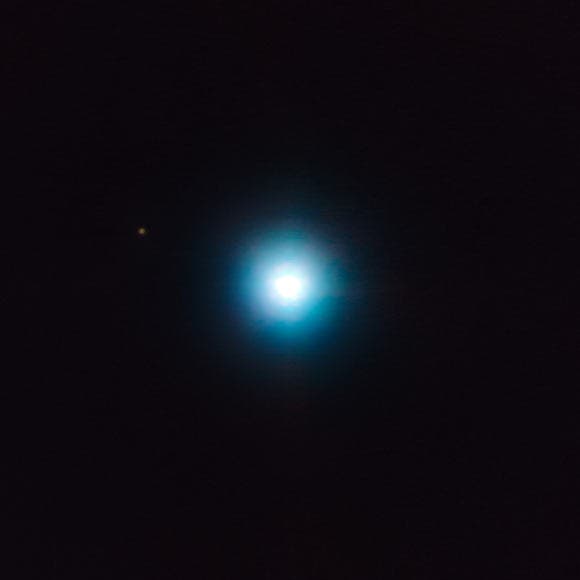
While some amateur astronomers are jubilant whenever they catch a shot of Jupiter through their lens, we can only imagine the joy a group of German researchers experienced when they imaged a Jupiter-sized planet… 1,200 light-years away.
The newly discovered planet named CVSO 30c has a mass between 4 and 5 Jupiters. It whorls around its parent star, CVSO 30, every 27,000 years at an orbital distance of 660 AU. In the same system, we can find another planet called CVSO 30b which is six times more massive than Jupiter and was initially discovered in 2012.
Not only did the team led by Dr. Tobias Schmidt of the Universities of Hamburg and Jena find CVSO 30c, they also directly imaged it. The astronomers directed the NACO and SINFONI instruments on ESO’s Very Large Telescope towards the Orion constellation and, particularly, a cluster of almost 200 low-mass stars collectively known as the 25 Orionis association.
Inside this cluster, the researchers found CVSO 30 and its planets. Remarkably CVSO is only two to three million years old, making it one of the youngest object inside 25 Orionis. An early bloomer, this star has already sprouted at least two planets in its system.
These intriguing circumstances will be explored further in the future by the German researchers. Hopefully, we might soon learn how such an exotic planetary system managed to form in such a brief time.
“CVSO 30 is the first system, in which both a close-in and a wide planet candidate are found to have a common host star,” Dr. Schmidt and co-authors said.
“Both orbits may have formed during a mutual catastrophic event of planet-planet scattering,” Schmidt added.
Findings appeared in the journal Astronomy & Astrophysics.


